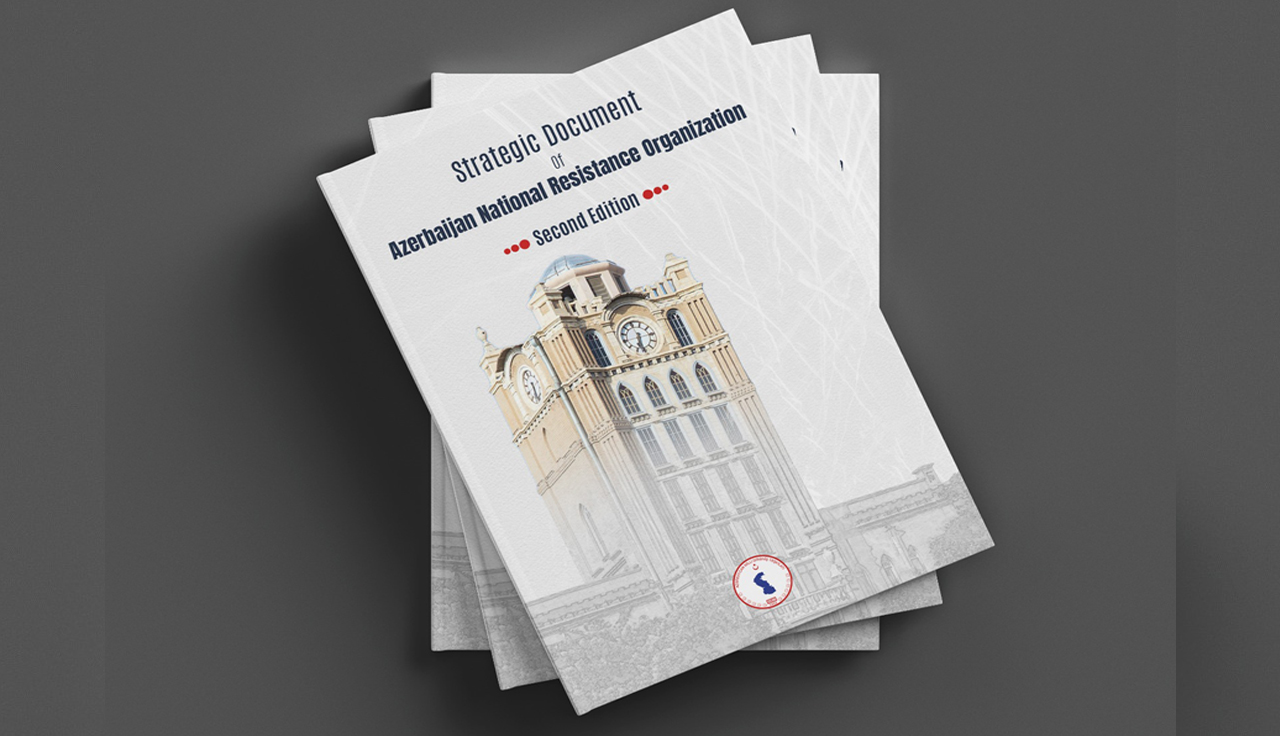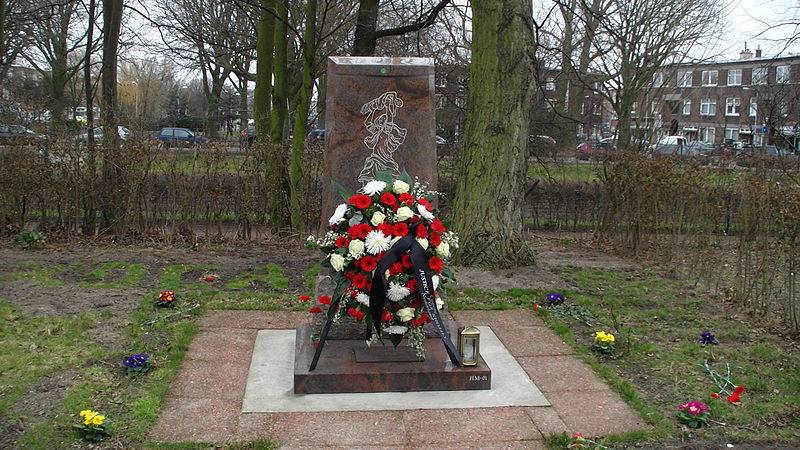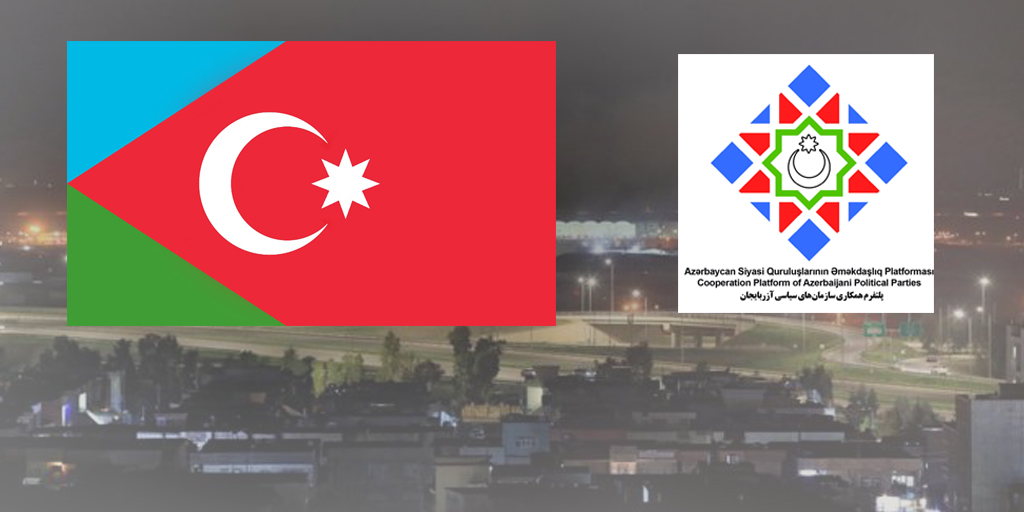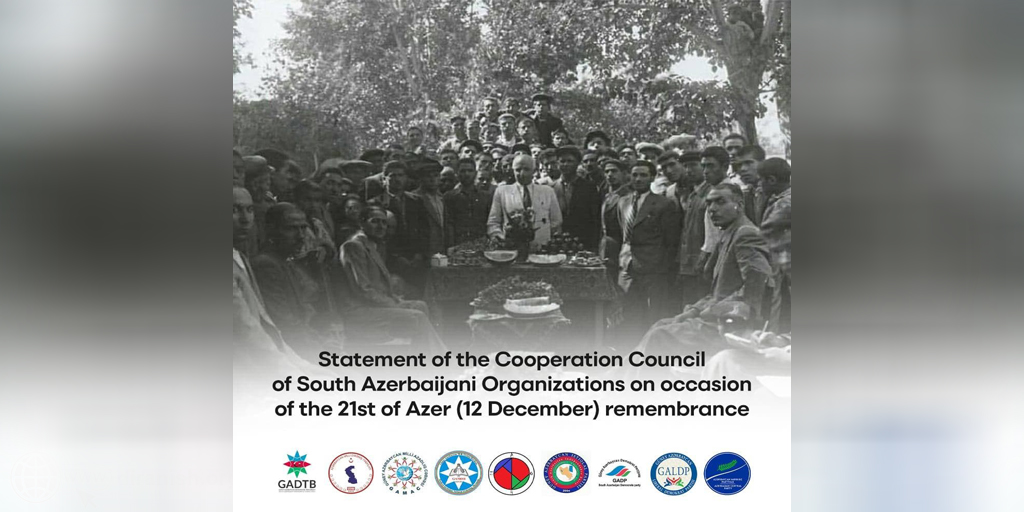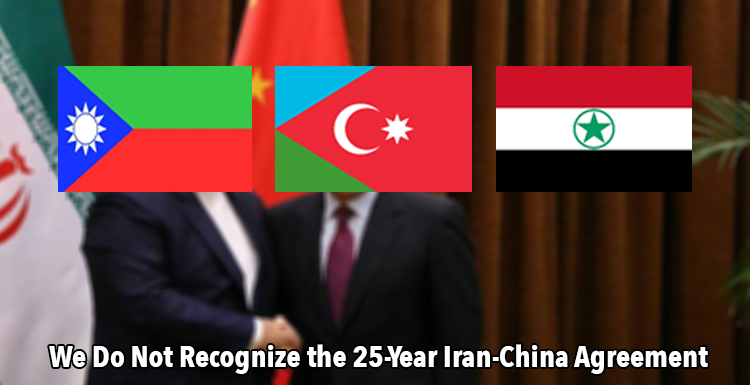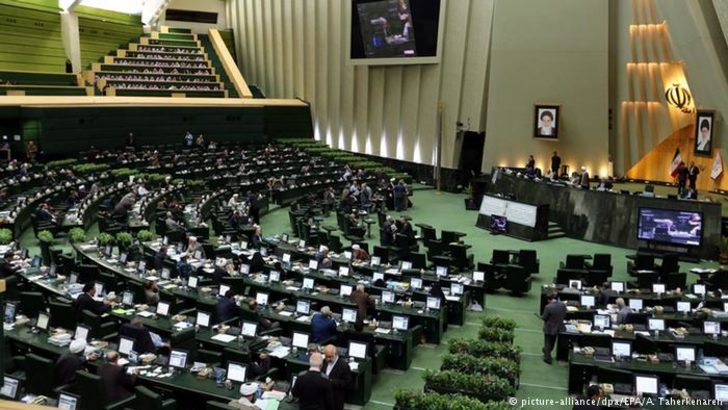Iranian Regime Is Killing Lake Urmia

By Umud Duzgun
The latest scientific study posits the location for the legendary Garden of Eden in South Azerbaijan (now northwestern Iran), in the vicinity of Tabriz upon which the Genesis tradition was based. According to the British archaeologist Davis M. Rohl, the Garden of Eden was then located in a long valley to the north of Sahand volcano, near Tabriz and not far from the footsteps of Adam and Eve (ancient Garden of Eden, 30 miles) is a lake called Urmia which is now dying not from the global climate change, but from the problems intentionally created by the ruling regime in Iran.
Lake Urmia, known as one of the largest permanent hyper saline lakes in the world, is located at the heart of South Azerbaijan (now northwest of Iran) and is slightly bigger than Utah’s Great Salt Lake. It extends as much as 90 miles from north to south and is as wide as 35 miles east to west during high water periods. This lake was declared a Wetland of International Importance (1971) and designated a UNESCO Biosphere Reserve (1976). Home to a unique species, Artemia, ducks, flamingos and seasonal habitat for many of migrating birds, Lake Urmia was a popular destination for vacationers.
Recently, Lake Urmia faces the danger of drying out and the local Azeri population holds the Iranian regime accountable suspecting that the neglect for Lake Urmia’s environmental problems stems from the Iranian government’s deliberate policy to depopulate the area densely populated by an ethnic minority – the Azerbaijani people. During the past five years, the local people used different symbols in protest, like pouring a bottle of water into lake or calling people for crying and filing the lake with their eye drops. “Let’s go to Lake Urmia and fill it up with our tears” The latest protest symbol for saving the dying lake appeared on a video posted on social media showing a girl speaking in her native language Azeri Turkish ” I’m from South Azerbaijan, for saving (to save) Lake Urmia and because of (Iranian president) Mr. Rouhani’s failure to keep his promise on saving Lake Urmia, I’m calling him for the Salt Bucket Challenge” then pouring a bucket of salt on herself.
Ethnic Minority Issues and Lake Urmia
For Azeri Turks the fate of Lake Urmia is a national, social, and economic issue and regarded as part of the Azerbaijani civilization. Unfortunately, the fate of the lake is now in the hands of a colonial regime of Iran. For the people outside the region it’s hard to understand that the political motives of the Iranian regime plays a significant rule behind the slowly unrolling death of the Lake. Iran is a multi ethnic and multi regional country. A region of South Azerbaijan (northwest- Iran) which divided in 9 provinces is the homeland of over 30 million Azeri Turks. As a largest ethnic group these people have been the backbone of the democratic movements for a century. They formed their own sovereign and democratic state independent from the Persian dominated regime of Iran (1945-46). However, this young democratic state became the first victim of the cold war and brutally crashed and occupied by the Iranian military forces. After the military occupation of South Azerbaijan the Iranian government imposed a tight control on its non-Persian population. The government introduced summary executions, jailing, burning the Azerbaijani school books printed in their own mother tongue. Mass exile and forced relocation followed by systematic and forced assimilation, banning the use of native language in all schools, offices, courts and replacing it with Persian language. The Azerbaijani regions of Iran were economically neglected, resulting in entrenched poverty. After the downfall of Sadam Husain in Iraq, in a close-door meeting (which leaked out and became a public information) about major investment in South Azerbaijan, the current advisor to Ayatollah Khamenei, Iran’s former foreign minister Ali Akbar Velayeti acknowledged that ” soon or later this region will separate from Iran and we should not waste our national budget for major/ key investment there”. This racist policy got worst in last decade, due to increased demand for ethnic minorities rights and the rise of independence movement.
Destruction of Lake Urmia
Destruction began with the construction of a 16 km Highway- causeway and 1.5 km bridge over the lake since late 80’s. This infrastructure cuts the lake almost in two equal parts and slows down the water flow from one half to another. As the water circulation in the lake is impeded, there has been a dramatic increase in the water salinity . The most destructive impact came from the construction of 39 dams over the 13 rivers that feed Lake Urmia. In contrast, the beneficiaries of water dams were not local farmers but the companies controlled by the Iranian regime’s militia elites. The lake had an estimated 32 billion meter cubic water (1975-95). By August 2014 has only about 2 billion cubic meters water and losing almost 95% of its water volumes. The average surface of the lake area used to be around 6100 km (1971-95). However, by cutting the 13 life line (main rivers) of the lake, it lost 85-90% of its original size by August 2014. The official Tehran claims the cause of drying the Lake entirely on global climate change and drought but the evidence shows only minimum of such effects (5%-10%). For instance, the Lake Van in Turkey just 90 miles in distance did not face any loss in water or size in the same period. The UN environmental experts acknowledged that the impact of drought is minimal and manageable by the Iranian government. However, the local people don’t expect any attempt from the Iranian government to save the lake because they believe that the Iranian regime has a hidden agenda behind the drying up of the Lake. They are intentionally creating a venue for demographic change by depopulating of ethnic Azeri Turks from their historic homeland and replacing them with ethnic Kurds. Among the Azeri activists, there have also been some speculations about the militarization of the vast salt land for a secret nuclear ambition in search of uranium from beneath of the lake and using the salt land as dumping ground for the nuclear waste.
Inaction of the government to save Lake Urmia is very obvious. Whereas, they are spending millions of dollars to built canals from Caspian sea and Karun river to Persian populated desert region in central Iran. There are only endless popular talks in seminars by officials about saving Lake Urmia and allocating a huge amount and planning to bring water jokingly as far as Republic of Georgia (which doesn’t have a share border with Iran), but on the ground no action were taken and no money were spent. The United Nations Development Program (UNDP) has allocated $135 million for Iran to address environmental issues of the Lake Urmia. That money has also disappeared.
Lake Urmia now became a vast salt desert land and a small portion of the heavily contaminated salty water. In fact, drying up of the lake already caused alteration of the local climate. According to the experts an estimated 8-10 billion cubic metric tons of salt will be released into the region resulting in an environmental, agricultural and social catastrophe. The salt storm which already started to throughout the whole region and threaten the health and existence of 6 million people around the Lake and tens of millions more beyond it.
Warning and Public Protests
Early warning from the environmental experts did not get any attention from the Iranian officials. However, the government reacted when a public protest critical of the Iranian government’s inaction on the lake alarmed the political scene in Iran in 2009. The Azerbaijani people launched a symbolic protest by pouring a bottle of water each into the lake and chanting “brake the dams – lake is thirsty”. In the follow-up of these protests, the Iranian regime had a heavy-handed crackdown arresting more than 150 people, sentencing some of them to long prison terms. A year later another large protest action took place in Tabriz on the World Environment Day, at the end of which the Iranian police arrested some 70 protesters. There were also protests in Europe and North America by the Azeri diasporas. In August 2011, after the Iranian parliament dropped an urgent bill to discuss the revival of the lake, thousands of people from Tabriz and Urmia City were on the streets protesting the central government for intentionally drying up the lake. Protesters chanted slogans including “Lake Urmia is in danger- Government ordered its death,” ” Mr. Ahmadinejad, is the crisis of Lake Urmia less important than the Nuclear Crisis of Iran?” The government responded by a violent attack of the Iranian security forces killing two protesters and arresting dozens. During the flawed presidential elections in June 2013, Rouhani promised to take measures to save Lake Urmia. But after becoming a president, he did not follow his words undertaking no measures during the past 15 months of his presidency. Instead, two more dams have now been built over the rivers and blocking the water-flow into Lake Urmia.
Solutions Proposed by International Experts
Environmental experts believe that Lake Urmia’s drying up has less to do with the climate change and drought, which are indicated by the Iranian government experts as the primary reason of this environmental catastrophe. This problem has more to do with the decades of environmental neglect and unregulated development, including construction of the causeway and bridge, too many dams and excessive water subsidies for agriculture. The suggested solutions to save the lake include diverting water from neighboring watersheds, removing some of the dams, bringing water from Zab and Araz rivers, Caspian sea and comprehensive integrated water management plan for irrigation and ecosystem preservation.
Government of Japan and some European countries have announced their readiness to restore Lake Urmia. In May 2014, at a signing ceremony allocating of $1 million from Japan to address Lake Urmia’s plight, the UN Resident Coordinator and UNDP Representative GARY LEWIS said :”The scientific evidence tells us that much of the water which enters the Urmia basin can still be allowed to flow naturally to the Lake – re-charging it and re-energizing its communities while we set aside enough to feed agriculture and industry,” and “it is a question of balance, this problem can be solved.” However, the Iranian government keeps pushing the official propaganda line trying to convince the public that it is impossible to save Lake Urmia. In June 2014, in a parliament session one MP from Tehran said: “the lake is already dead, we should not waste our money for it. Instead we should give some money to local people around the lake to move to other provinces.” This indicates a new form of ethnic cleansing that is taking place in Iran, right now! The Soviet Union regime had implemented the same policy to declare the death of Aral Sea until its break up (1991). However, that policy of distraction and ignorance changed by the independent government of Kazakhstan to a policy of hope and revival of the Aral Sea which has started to make a recovery. Now there are fish in the water again, and people are returning to their towns and normal lives.
Unfortunately, the Iranian regime keeps ignoring the suggestions by international experts to save the lake. The Iranian government has even had the success of misleading and silencing the world’s environmental organizations by rejecting any direct involvement and technical help from other countries.
The fate of Lake Urmia is essential for the people living in the vast regions around it. In fact the very existence of South Azerbaijan is dependent upon it. The South Azerbaijani people believe that, it was the Iranian regime, which planned the lake’s destruction and gradually implemented it during the last 20 years. Unfortunately, many years of the civil protests, which resulted in heavy crackdowns by the Iranian security forces, the voice of South Azerbaijani people have not been heard by the international community. People are using all civil methods in protest and paying a heavy price for the revival the lake hoping to spread the awareness to the world that the sacred lake of South Azerbaijan Lake Urmia is being killed by the deliberate policies of the Iranian government, that the Iranian regime is destroying the regions populated by the Azerbaijani people to achieve a demographic alteration, that people are about to lose their homelands where they lived for over thousand years.










